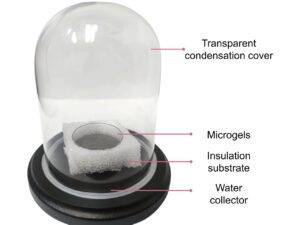2023-09-11 ケンブリッジ大学
◆これまでの観測では、Hubble宇宙望遠鏡で初めてK2-18 bの大気を観測しましたが、その組成については議論がありました。しかし、最新のJames Webb Space Telescope(JWST)の観測により、K2-18 bの大気中にメタンと二酸化炭素が存在することが確認されました。さらに、微弱な信号から二硫化ジメチル(DMS)と呼ばれる分子が存在する可能性も浮上し、地球の海洋フィトプランクトンなど微生物生命によってのみ生成されるDMSが、K2-18 bでの生物活動の可能性を示唆しています。
◆これらの情報から、K2-18 bと他のハイシアン惑星は、太陽系外で生命を発見する最良の機会かもしれません。
<関連情報>
- https://www.cam.ac.uk/stories/carbon-found-in-habitable-zone-exoplanet
- https://esawebb.org/media/archives/releases/sciencepapers/weic2321/weic2321a.pdf
ハイオーシャンの大気に含まれる可能性のある炭素分子 Carbon-bearing Molecules in a Possible Hycean Atmosphere
Nikku Madhusudhan, Subhajit Sarkar, Savvas Constantinou, M˚ans Holmberg, Anjali Piette, and Julianne I. Moses
Draft version September 11, 2023

ABSTRACT
The search for habitable environments and biomarkers in exoplanetary atmospheres is the holy grail of exoplanet science. The detection of atmospheric signatures of habitable Earth-like exoplanets is challenging due to their small planet-star size contrast and thin atmospheres with high mean molecular weight. Recently, a new class of habitable exoplanets, called Hycean worlds, has been proposed, defined as temperate ocean-covered worlds with H2-rich atmospheres. Their large sizes and extended atmospheres, compared to rocky planets of the same mass, make Hycean worlds significantly more accessible to atmospheric spectroscopy with the JWST. Here we report a transmission spectrum of the candidate Hycean world, K2-18 b, observed with the JWST NIRISS and NIRSpec instruments in the 0.9-5.2 µm range. The spectrum reveals strong detections of methane (CH4) and carbon dioxide (CO2) at 5σ and 3σ confidence, respectively, with high volume mixing ratios of ∼1% each in a H2- rich atmosphere. The abundant CH4 and CO2 along with the non-detection of ammonia (NH3) are consistent with chemical predictions for an ocean under a temperate H2-rich atmosphere on K2-18 b. The spectrum also suggests potential signs of dimethyl sulfide (DMS), which has been predicted to be an observable biomarker in Hycean worlds, motivating considerations of possible biological activity on the planet. The detection of CH4 resolves the long-standing missing methane problem for temperate exoplanets and the degeneracy in the atmospheric composition of K2-18 b from previous observations. We discuss possible implications of the findings, open questions, and future observations to explore this new regime in the search for life elsewhere.




